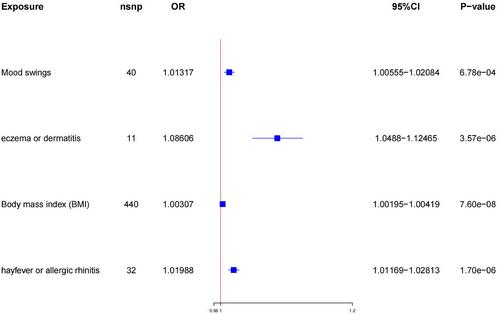Proteomic analysis reveals potential therapeutic targets for childhood asthma through Mendelian randomization
Abstract
Background
Asthma is the most common chronic disease among children and poses a significant threat to their health. This study aims to assess the relationship between various plasma proteins and childhood asthma, thereby identifying potential therapeutic targets.
Methods
Based on publicly available genome-wide association study summary statistics, we employed a two-sample Mendelian randomization (MR) approach to elucidate the causal relationship between plasma proteins and asthma. Mediation analysis was then conducted to evaluate the indirect influence of plasma proteins on childhood asthma mediated through risk factors. Comprehensive analysis was also conducted to explore the association between plasma proteins and various phenotypes using the UK Biobank dataset.
Results
MR analysis uncovered a causal relationship between 10 plasma proteins and childhood asthma. Elevated levels of seven proteins (TLR4, UBP25, CBR1, Rac GTPase-activating protein 1 [RGAP1], IL-21, MICB, and PDE4D) and decreased levels of three proteins (GSTO1, LIRB4 and PIGF) were associated with an increased risk of childhood asthma. Our findings further validated the connections between reported risk factors (body mass index, mood swings, hay fever or allergic rhinitis, and eczema or dermatitis) and childhood asthma. Mediation analysis revealed the influence of proteins on childhood asthma outcomes through risk factors. Furthermore, the MR analysis identified 73 plasma proteins that exhibited causal associations with at least one risk factor for childhood asthma. Among them, RGAP1 mediates a significant proportion (25.10%) of the risk of childhood asthma through eczema or dermatitis. Finally, a phenotype-wide association study based on these 10 proteins and 1403 diseases provided novel associations between these biomarkers and multiple phenotypes.
Conclusion
Our study comprehensively investigated the causal relationship between plasma proteins and childhood asthma, providing novel insights into potential therapeutic targets.


 求助内容:
求助内容: 应助结果提醒方式:
应助结果提醒方式:


